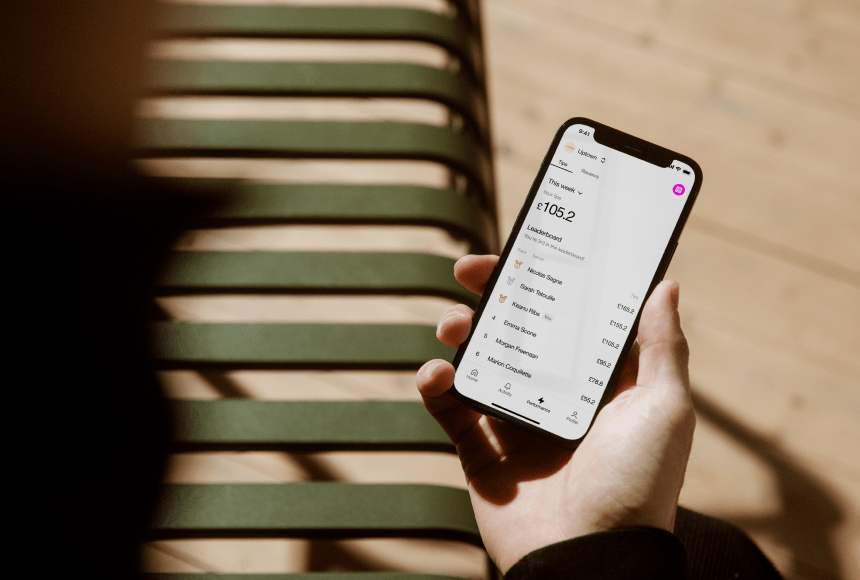
Leading Your Restaurant Staff into a Bright, Tech-Powered Future
Why a Digital Approach to Team Management Matters
In a dynamic and highly competitive hospitality landscape, success goes far beyond great recipes or a stylish dining room. True excellence emerges from a restaurant’s heart: its team. But managing this vibrant mix of personalities and skills isn’t the same job it was a decade ago. In 2025, digital solutions have become the new backbone for boosting team efficiency, streamlining workflows, and ensuring every diner walks away with a memorable experience.
If you’re used to juggling Excel sheets for scheduling and endless group chats for staff communications, take a moment to consider how modern tools can simplify your life. From advanced rota apps to frictionless payment solutions, these digital aids let managers focus on the big picture: building a strong, motivated team that delights customers. Below, we’ll explore must-have digital tools that can help transform how you manage your restaurant staff in the coming years.
1. Real-Time Rota and Scheduling Apps
Scheduling is the invisible glue that holds your restaurant together. One mismatched shift can mean chaos: an overworked server here, an understaffed lunch rush there. Old-fashioned methods (like pinned notices or multiple back-and-forth messages) often breed errors and confusion.
- Why Go Digital? Modern rota apps let you manage shifts from a central dashboard. Staff can view schedules on their phones, request swaps, or confirm availability without a thousand text messages. Some solutions even auto-suggest changes based on predicted footfall.
- How It Helps Staff Motivation: Employees see their schedules instantly, plan their personal lives better, and feel more control over shift requests. Fewer misunderstandings, fewer last-minute calls to fill a missing post.
Ultimately, a good digital scheduling platform fosters fairness and transparency. Everyone knows what’s expected, and managers spend less time firefighting unpredictable rotas.
2. Digital Communication and Collaboration Tools
The restaurant floor is a busy crossroads: servers, bartenders, chefs, and hosts move constantly, and each second is precious. Overly complicated communication — or zero communication — raises the risk of missed orders, annoyed diners, and staff friction.
Must-have digital solutions might include:
- Group Chat Platforms: Tools that separate casual banter from crucial updates. In one channel, you might share daily specials. In another, your chef announces a new dish to watch out for. Everyone remains in sync.
- Task Management Systems: Some restaurants use lightweight task apps so the manager can delegate cleaning or restocking duties, marking them off in real time. Quick push notifications let the relevant person know they have a new to-do.
With strong communication apps, staff reduce face-to-face confusion, and managers gain a birds-eye view of how quickly tasks are being handled. Efficiency rises, staff stress declines, and that positivity often reflects in how they treat guests.
3. Quick, Easy Payment Tools to Lighten the Load
Few moments are more stressful for your team than the crunch of a busy shift when tables want to pay simultaneously. Hunting down a card machine, waiting for multiple receipts to print, or dividing up the bill for large parties can bog everything down.
What modern payment solutions bring:
- Faster Checkout: Sunday, for example, uses a QR code at the table so diners can settle up themselves in seconds. No rummaging around for a card reader or staff re-entering the total. That means servers spend less time on mechanical tasks and more time on genuine hospitality.
- Integrated Tipping: Digital tip prompts encourage guests to reward good service, helping staff earn more and feel more enthusiastic. It’s a win-win that doesn’t require an awkward “Shall I add a gratuity?” moment.
By removing friction from that final step, you not only free your team to greet new arrivals or manage other duties, but you also end the meal on a high note for diners. That synergy keeps staff morale strong and paves the way for a better review or return visit.
4. Advanced Analytics to Drive Performance
A digital manager in 2025 can’t rely solely on gut instinct. Data reigns supreme: from the average time it takes a table to be served, to which shifts yield the highest tips, analytics give you a precise lens on staff performance and bottlenecks.
Key metrics to watch:
- Table Turnover Times: How long does it take for an average customer to settle and free up their seat? If you notice that weekend brunch is slower, you might reposition certain staff or add an extra server to those shifts.
- Sales per Server: The difference between your top performer and the average staffer can be eye-opening. Identifying that disparity opens conversations about best practices or extra training for those who lag behind.
- Tip Tracking: If your digital payment system logs tips automatically, managers can see who’s consistently earning higher gratuities, and why. This fosters a merit-based, motivational environment.
By tapping into these insights, you can run coaching sessions or reorder staff responsibilities quickly, keeping everyone on a path of continued improvement. Data, if used wisely, helps you make changes grounded in facts rather than hunches.
5. Gamification and Staff Engagement Platforms
Some restaurants are turning to gamification to keep teams motivated. Think of small challenges, whether it’s selling the “special dessert of the day” or best upselling on drinks. Modern apps track these micro-competitions in real time, showing a leaderboard and awarding little perks or recognition.
The benefits of gamification:
- Healthy Competition: Staff who see a colleague topping the “specials sold” list might push themselves a bit harder. That friendly rivalry can directly lift revenue, especially if each extra item sold means a higher total spend per table.
- Team Bonding: If you also create team-based goals (e.g., front-of-house collectively beats last week’s dessert upsell record), staff learn to support each other rather than compete at each other’s expense.
The key is to ensure these challenges are fun, fair, and revolve around improving guest satisfaction — not random metrics. The right app can make daily shifts feel more like a shared quest than a tiring routine.
6. Automated Training and E-Learning Modules
In hospitality, staff turnover can be high, and new hires need to learn quickly. That’s where digital e-learning platforms step in. Instead of scheduling long, in-person sessions that disrupt daily operations, you can roll out short, interactive modules staff can complete on their phone or a tablet during quieter moments.
- Consistency in Knowledge: Everyone hears the same instructions and sees the same best practices, leading to uniform service standards.
- Self-Paced and Engaging: Quizzes, quick videos, and scenario-based tasks help staff retain crucial info, from dealing with dietary requests to mastering the latest table-side payment tool.
- Manager Oversight: You can track who’s completed which module and see who might need a refresher. That fosters a culture of ongoing growth, rather than a one-off training day everyone forgets.Staff who feel consistently developed tend to stay longer and deliver better service — a boost to both morale and your bottom line.
7. Digital Solutions for Handling Staff Feedback and Well-Being
A restaurant is only as strong as the well-being of its people. Overworked or unhappy staff inevitably produce lower-quality experiences, making them more likely to leave. Digital feedback platforms can help:
- Anonymous Surveys: Let employees periodically express concerns or praise anonymously. You might discover that the weekend close shift is too grueling, or that staff appreciate a newly introduced roster method. This fosters an atmosphere of open communication, where everyone’s voice counts.
- Pulse Check Polls: Running quick weekly polls (via a staff app) can highlight potential stress or workload issues early. If multiple employees say they’re overwhelmed, managers can tweak schedules or rotate tasks accordingly.
By using digital channels for well-being checks, you address small problems before they escalate into major turnover or morale declines. And when staff see management actively responding, trust flourishes.
8. Seamless Tip Distribution and Financial Transparency
The distribution of gratuities can be a sensitive topic. Traditional tip jars or end-of-night splitting often rely on honour systems or manual tallies, leading to suspicion or mistakes. Modern tip management platforms integrate with payment solutions like Sunday, generating an automatic record of each tip so managers can oversee fair allocations:
- Accurate Splitting by Shift or Role: Weighted splits ensure bartenders, bussers, and servers get their rightful share.
- Instant Visibility: Staff log in to see exactly how much they earned, minimising dissatisfaction or queries at the end of the day.
Transparency is powerful. When staff can trust in a fair system, they’re more motivated to give each table their best effort. And from a managerial standpoint, you cut down on tip-related disputes and the admin overhead of complicated manual calculations.
Getting Started: Tips for a Smooth Digital Transition
You might be sold on the idea of modernising your management style, but worried about how to begin. Here are a few practical steps:
- Pinpoint Your Pain Points: Do you struggle with scheduling? Are you noticing confusion about final bills or tips? Pick one or two issues to tackle first, then select a tool specifically designed to solve them.
- Involve Staff Early: Let your team test or preview the software. Their early feedback can guide better choices and foster a sense of joint ownership.
- Invest in Training: Even the most intuitive interface may need a bit of orientation. Provide short, effective sessions so staff won’t feel lost and revert to old habits.
- Track and Refine: After rolling out new apps or systems, check metrics like staff satisfaction, tip averages, or table turnover. Tweak settings or processes as needed. Digital management is a journey, not a one-off event.
Cultivating a Future-Ready Team Culture
Digital transformation in 2025 isn’t a fleeting trend; it’s the new baseline. Diners expect quick, tech-enabled convenience; staff yearn for modern solutions that ease their day rather than complicate it. By blending must-have digital tools — from advanced scheduling apps to Sunday’s frictionless payment process — you position your restaurant as an innovative, guest-centric venue.
But remember, technology alone can’t solve every challenge. It’s your leadership that ensures these tools empower (not replace) the human touch that diners crave. Bring staff along by showing how each app or platform benefits them personally, whether through fewer awkward tip confrontations or simpler scheduling. Build trust by listening to their feedback and tackling concerns early.
When everything clicks into place, the advantages multiply. Managers see calmer shifts and stronger margins. Staff enjoy higher tips, clearer communication, and an environment that respects their well-being. Diners receive more attentive service, delivered with a personal flair unburdened by manual drudgery. That synergy is what sets a truly standout restaurant apart in a competitive, fast-evolving industry.
So, if you’ve been operating with pen-and-paper diaries or patchy group texts, now’s the moment to step forward. Embrace the digital management tools of 2025, keep your staff at the core of the journey, and watch as your restaurant thrives in an era where technological ingenuity and warm, human service go hand in hand.
7. Digital Solutions for Handling Staff Feedback and Well-Being
A restaurant is only as strong as the well-being of its people. Overworked or unhappy staff inevitably produce lower-quality experiences, making them more likely to leave. Digital feedback platforms can help:
- Anonymous Surveys: Let employees periodically express concerns or praise anonymously. You might discover that the weekend close shift is too grueling, or that staff appreciate a newly introduced roster method. This fosters an atmosphere of open communication, where everyone’s voice counts.
- Pulse Check Polls: Running quick weekly polls (via a staff app) can highlight potential stress or workload issues early. If multiple employees say they’re overwhelmed, managers can tweak schedules or rotate tasks accordingly.
By using digital channels for well-being checks, you address small problems before they escalate into major turnover or morale declines. And when staff see management actively responding, trust flourishes.
8. Seamless Tip Distribution and Financial Transparency
The distribution of gratuities can be a sensitive topic. Traditional tip jars or end-of-night splitting often rely on honour systems or manual tallies, leading to suspicion or mistakes. Modern tip management platforms integrate with payment solutions like Sunday, generating an automatic record of each tip so managers can oversee fair allocations:
- Accurate Splitting by Shift or Role: Weighted splits ensure bartenders, bussers, and servers get their rightful share.
- Instant Visibility: Staff log in to see exactly how much they earned, minimising dissatisfaction or queries at the end of the day.
Transparency is powerful. When staff can trust in a fair system, they’re more motivated to give each table their best effort. And from a managerial standpoint, you cut down on tip-related disputes and the admin overhead of complicated manual calculations.
Getting Started: Tips for a Smooth Digital Transition
You might be sold on the idea of modernising your management style, but worried about how to begin. Here are a few practical steps:
- Pinpoint Your Pain Points: Do you struggle with scheduling? Are you noticing confusion about final bills or tips? Pick one or two issues to tackle first, then select a tool specifically designed to solve them.
- Involve Staff Early: Let your team test or preview the software. Their early feedback can guide better choices and foster a sense of joint ownership.
- Invest in Training: Even the most intuitive interface may need a bit of orientation. Provide short, effective sessions so staff won’t feel lost and revert to old habits.
- Track and Refine: After rolling out new apps or systems, check metrics like staff satisfaction, tip averages, or table turnover. Tweak settings or processes as needed. Digital management is a journey, not a one-off event.
Cultivating a Future-Ready Team Culture
Digital transformation in 2025 isn’t a fleeting trend; it’s the new baseline. Diners expect quick, tech-enabled convenience; staff yearn for modern solutions that ease their day rather than complicate it. By blending must-have digital tools — from advanced scheduling apps to Sunday’s frictionless payment process — you position your restaurant as an innovative, guest-centric venue.
But remember, technology alone can’t solve every challenge. It’s your leadership that ensures these tools empower (not replace) the human touch that diners crave. Bring staff along by showing how each app or platform benefits them personally, whether through fewer awkward tip confrontations or simpler scheduling. Build trust by listening to their feedback and tackling concerns early.
When everything clicks into place, the advantages multiply. Managers see calmer shifts and stronger margins. Staff enjoy higher tips, clearer communication, and an environment that respects their well-being. Diners receive more attentive service, delivered with a personal flair unburdened by manual drudgery. That synergy is what sets a truly standout restaurant apart in a competitive, fast-evolving industry.
So, if you’ve been operating with pen-and-paper diaries or patchy group texts, now’s the moment to step forward. Embrace the digital management tools of 2025, keep your staff at the core of the journey, and watch as your restaurant thrives in an era where technological ingenuity and warm, human service go hand in hand.
Find out more today
Drop us your details below and we’ll reach out within the next 24
Get the full, detailed picture.
sunday elevates your business with insightful data, instant feedback and precise analytics.


